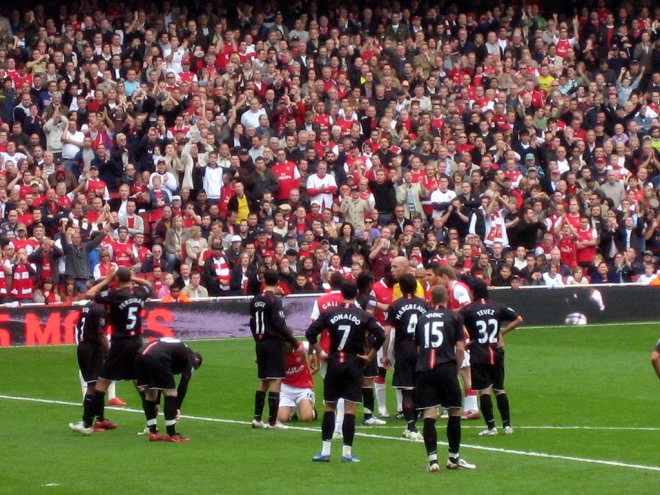I do not care what you want.
Seems harsh? I mean no rudeness or wish to break from appropriate decorum. Yet, I say this often to my architecture students to teach them to speak carefully and accurately about their work.
What I want is equally irrelevant by the way. What you want as a client or community member is more important. What the project requires is most important. After reading recent comments in a major magazine from a respected design firm of what “they wanted”, I was reminded of a point needing to be made.
Most things about my approach to architecture are really that simple. I teach them to my students and I believe that if architects adopted better presentation habits much of the alleged noise going on in the profession could possibly go away. We can speak intelligently without being pretentious or falsely erudite. Just say it.
Here are three values to consider.
WE
The first value is I use the pronoun “we” even though my office is comprised of just me. This is something most of my architect friends do as a matter of course because we want to develop a culture of collaboration and sharing. “We did this” or “we did that” sounds so much better than ‘I’ did this. When I use the term ‘we’ I’m actually including everybody that could have contributed or collaborated, even if they’re not an architect or work for the architectural firm responsible. It includes you the client or consultant too.
It does tend to freak out some of my clients because they occasionally ask who “we” is. They all know I am a solo-practitioner, but they don’t see that I sometimes have drafting help and other collaborators. It’s just a good way of training oneself to acknowledge that architecture happens with the many, not the one.
I WANT
This is a big pet peeve, but falls out of our mouths like the common verbal fillers of uh, um and y’know. All of us occasionally fall prey to these when speaking. However, it’s a bad habit permitted to start in school and unless wackos like me force their students to break the habit, it continues. The architect will always have a voice in the design; that’s why they hire us over others. Nevertheless, we should be able to speak about our solutions from the analysis, research and deductions made for why things are the way they are or the way they work. This won’t explain every line or every brick, but we need to be more thoughtful or less lazy than saying things as shallow as “I wanted to wash the walls with light and make the plan feel open.” Ugh.
Saying “I want” or “I wanted” is at best shallow or at worst specious. How we listen, think, analyze and respond based on the criteria and demands of all of the things speaking to the design is what matters. Our voice in how it appears is only the interpretation. Semantics? I’d argue no.
THIS DESIGN WILL MAKE ONE FEEL, WILL CAUSE, WILL ….
Perhaps this is just a common fault among students. We as designers cannot make any of these things happen for sure, nor can a building. All we can do is be thoughtful enough to provide opportunities. Predicting how one might feel in a space or how one will react or behave in a space is impossible. Based on past experience and research, we can design in a way that will improve chances to foster a certain behavior or reaction. It’s far more interesting to allow people to react or develop an opinion on their own.
If we can be as creative and discerning with our words as we are with architectural form, we’ll come up with a better way to say things – things that will more accurately reflect our real value and expertise. I have no interest in being the language police, but I believe we need to accurately describe how our projects work.
Now that I wrote this, I want a cup of coffee. It will make me feel better. Cheers.
photo 1 credit: Man holding microphone via photopin (license)
photo 2 credit: Arsenal vs Manchester United via photopin (license)
photo 3 credit: I want… I can… 11192010053 via photopin (license)
photo 4 credit: IMG_9624 via photopin (license)







When I taught, I forbid my students to say “I Like” When they did, I would say…”So what, I like chocolate and you like vanilla!” Liking something can be pretty relevant. I encouraged them to articulate more appropriately, by saying. “I’m intrigued with…”, or “I am interested in…” So, I have to say, I am intrigued with what you wrote, Lee!
Edward – yes brilliant. I avoid that too. So many students and architects start off with “I wanted to…with this design and then I wanted to…” Blah. Who cares. What did you DO and what does it DO? BTW I say I like Coke and you like Pepsi for your argument. Great thoughts!
Thom Mayne said yesterday that he now hires lawyers and writers to create the narrative for the building for PR and publishing – because architects coming out of school today have no idea of how to craft the explanation behind the design…even if they designed it. I noticed that with the crits I gave before his talk, too.
Keep pushing them Lee. “We” need it.
Yup…
Lee;
“We” resultant = The design.
“I want” resultant = The design’s accomplishments.
“The design will…” = With “Architecture” >The design “SHALL!”
With great faith in your thoughts and their technical applications, I believe that your “Architecture” “Shall”…
Bill Mello
Bill, I always love your insight. The impetus behind my main point is hearing students and practitioners start to describe their work as “I wanted to…” presuming that the thrust behind their work is merely their will and not the result of all of the other factors that go into making the decisions. The building IS this way because of…analysis, client, budget, code, and so on. What the architect ‘wanted’ much like we ‘want’ other things doesn’t encapsulate the thought and process behind what we do. It sells it short. However, I love your summaries – short, concise.
Reblogged this on Jamie-Lee Collins.